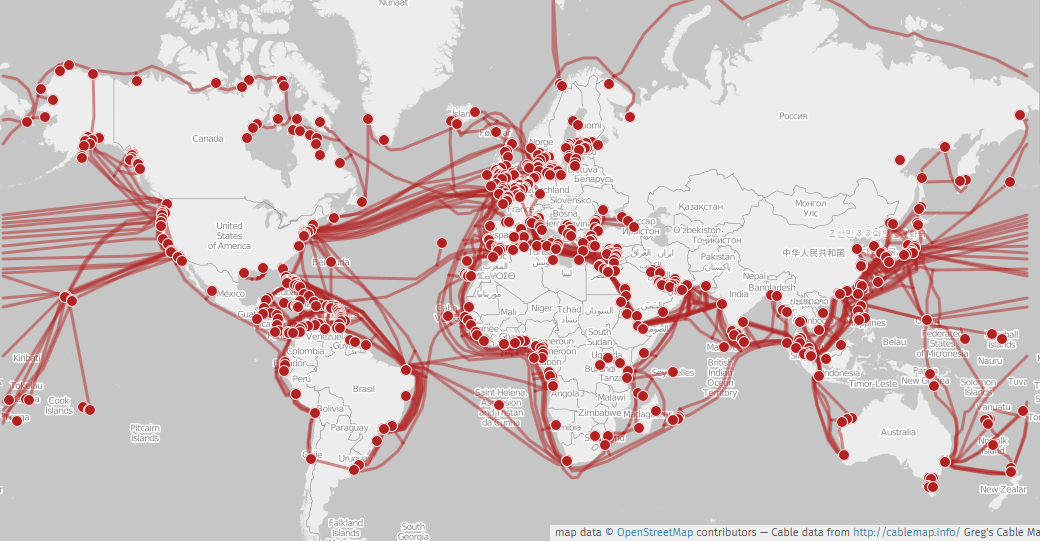It’s hard to imagine while you’re on a video call or reading articles on your favorite popular science media outlet, but that information has most likely reached your device through a vast network of undersea cables.
These fiber-optic cables, typically about the girth of a sausage, use light to carry vast amounts of data over long distances with minimal information loss. The cables physically link every continent on Earth (except the freak continent, Antarctica) and transmit over 95 percent of the world’s data.
When they work, they are very quick and effective – but these crucial links are increasingly vulnerable to attacks, accidents, and other mishaps. It’s estimated that 100 to 150 cables are severed yearly, mostly due to accidents involving fishing equipment or anchors being dragged across the seafloor.
There’s also the growing risk of sabotage. In November 2024, two submarine internet cables were severed in Europe’s Baltic Sea. While European governments avoided directly pointing the finger at any one country, they hinted that the incidents might be part of “hybrid attacks” by Russia on European underwater infrastructure in retaliation for supporting Ukraine. Russian officials dismissed the accusations as “quite absurd.”
Regardless of what exactly happened last year in the Baltic Sea, the incident highlights just how vulnerable subsea cables are to accidental calamities or conscious attacks.

World map showing submarine cables in 2015.
To ensure reliable internet connections are maintained in an increasingly uncertain world, NATO is funding a new project to reroute data through space as a safeguard against disruptions to critical infrastructure.
“Think about Iceland. Iceland has a lot of financial services, a lot of cloud computing, and it is connected to Europe and North America by four cables. If those four cables get destroyed or compromised, Iceland is completely isolated from the world,” Nicolò Boschetti, a doctoral student at Cornell University working on the project, told IEEE Spectrum.
Named the Hybrid Space/Submarine Architecture Ensuring Infosec of Telecommunications (HEIST) consortium, the project aims to create a less-penetrable internet system using a hybrid network of submarine cables and satellite communications.
There is already another option on the table: Starlink, the satellite internet service developed by SpaceX, which currently delivers a large amount of space-based internet traffic. However, this isn’t without its problems. Elon Musk offered the use of Starlink to Ukraine amid the ongoing Russian invasion, where it has been used to coordinate drone strikes and communication.
Some have questioned whether it is appropriate for a single individual (regardless of public opinion about them) to wield such significant influence over global affairs. With HEIST, NATO governments aim to establish a secure and independent backup, not reliant on the whims of a sole billionaire.
The project is currently being worked on by an international and interdisciplinary team involving members from Cornell University, Johns Hopkins University, Bifröst University, Swedish Defence University, Blekinge Institute of Technology, ETH Zürich, the Royal Swedish Navy, the Icelandic government, and multiple private companies.
If all goes to plan, a functional prototype of the system could be ready in two years, although parts of the HEIST team hope to start testing elements of the program in 2025.
“We are assembling pieces of the puzzle and trying to create this massive new ecosystem,” Greg Falco, assistant professor of mechanical and aerospace engineering at Cornell Engineering, told the Cornell Chronicle.
“I’d say this is 100% a systems engineering problem, meaning that none of the tech that we’re going to build or assemble hasn’t already in some form been conceived in other applications. This is about fitting all the pieces together. From an engineering perspective, it’s hard, but then also you have the regulatory and political and economic nature of this, which is also hard,” Falco added.
Source Link: NATO Is Making A Hybrid Space-Linked Internet System In Case of Disaster